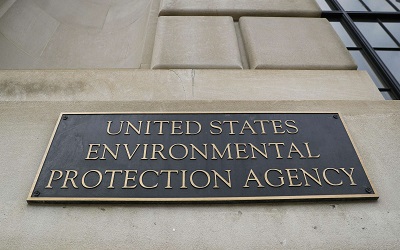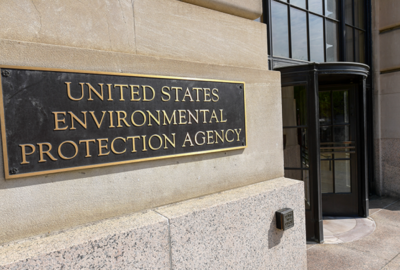How the election could affect the EPA
The environmental issue showed the stark contrast between the two presidential candidates. How will President-elect Trump deal with climate change?
Few issues showed the stark contrast between the two former presidential candidates than the environmental issue. How President-elect Donald Trump will deal with climate change and energy, well, fasten your seat belt. Environmental attorney Martin Booher, of Baker Hostetler, joined the Federal Drive with Tom Temin to provide analysis.
Interview transcript:
Tom Temin: You represent clients in metals and metals bring together a lot of issues concerning energy, the way in which smelting happens, electric or gas fired and so forth. I guess maybe there’s still some coal fire, I don’t know, coking coal. And then there is the mining and transportation of materials. So a lot of issues come to bear in the production of metal. What does it look like now and how do you think it’ll change?
Martin Booher: Well, I can say that, you know, the U.S. steel industry has long been undergoing a transition from traditional coking and basic oxygen furnaces, blast furnaces to electric furnaces. And that technical innovation has allowed us to be very competitive on the global stage. But at the end of the day, how is it going to change because an electric furnace is still a primary steel production facility and we still are making a lot of steel in this country and they have massive energy needs. And so what they do and how they source for energy has a significant impact on the overall mix of the issues on the environmental side that we see today.
Tom Temin: Right. Because an arc furnace is using energy on the scale of a bitcoin data mining center, correct?
Martin Booher: Yeah. A large electric arc furnace will, you know, double set will consume almost nominal 250 MW of power when both are running at full capacity.
Tom Temin: Right. And so the trend in the current administration has been to move, you see this at the state level, to move toward renewable sources of energy. And is that sustainable for heavy industrial production? And what would you expect or what would you hope to happen with respect to energy sources for this kind of basic work that the country does?
Martin Booher: Well, look, the regulatory impetus for transitioning, say, your energy supply that we’ve seen over the past years in the Biden administration and Harris administration is likely to go. Right. I mean, I think we’ve heard from the Trump administration that the climate change initiatives are going to stop. And so anything tied to carbon is likely not going to be something that gets a lot of headway and attention in the administration. And we know that the Trump administration is going to prioritize natural gas, oil, other mineral extraction, such as coal. So and some of the impediments that we’ve seen in terms of issuance of federal leasing on federal lands to do that extraction are going to go away very shortly after he takes office. But in terms of how like, say, the steel industry is a focus. They are providing products to customers and customers like, say, for example, large automotive companies and the customers of those companies, us, consumers, want a greener product. And part of getting a greener product is having greener inputs such as green steel. So the industry has been very focused on greening, and that means very focused on sourcing their power from renewable energy. And if you see some of the new or recently built steel mills or ones that have been announced in large part they’re being announced with a joint solar facility attached to them and or associated with them to provide power along with battery storage and backup.
Tom Temin: We’re speaking with attorney Martin Booker. He’s a partner at Baker Hostetler. So you can operate with a hybrid mix, in other words, and get your steel mill operating the way you want?
Martin Booher: Yeah. The technology is advancing, right. And the sun doesn’t always shine and the wind doesn’t always blow. But advances in battery storage do allow and do provide operational flexibility, much like we’ve seen in electric vehicles and things like that to mills. It’s not a perfect solution and the technology continues. It needs to continue to advance. It’s still very expensive. And so those that are implementing or implementing with a goal on attacking the higher quality steel market such as automotive and electrical and things like that. So what we’re seeing though, is that trend and we’re seeing the local utilities who are responding that generate the power also that are responding to those that demand.
Tom Temin: [Couple of questions. The U.S. steel industry does supply the rolled steel that is used in cars to the domestic carmaking, still?
Martin Booher: Yes.
Tom Temin: And do they generally smelt or is it scrap that is turned into new steel?
Martin Booher: So it’s both. But I would say that the growing trend in the United States is the scrap. It’s the taking the scrap charging an electric arc furnace to produce steel. The technology is advanced in such a way that you can now produce almost any grade of steel that traditionally can only be made in integrated mill. Now, you can do that in electric power furnace.
Tom Temin: Right. So that’s kind of a self-greening mechanism, the use of scrap rather than ore?
Martin Booher: Right. I mean, at their heart, they’re metal recycling facilities. So they eliminate the need for ore in mining. Although, they a lot of times in order to get certain grades of steel, they’re still going to be a role for integrated steel manufacturers in the United States and coking. Let me be clear because there are certain inputs that they make, such as pig iron, that are often used in electric furnaces and to increase whatever iron content to make the steel that you need. I’ll leave that to the steel engineers.
Tom Temin: Right. Sure. Yeah. We don’t want to get into a metallurgy discussion here, but are there specific regulations or proposed regulations from, say, EPA that the industry would like to see revised under a Trump administration?
Martin Booher: Yeah, there are several rulemakings that affect, primarily, I would say the integrated mills so the blast furnace basic acid in furnaces as well as the coking operations, whether that’s through merchant coking and or coking operations that are happening at the integrated mills. And so there are two standards that were adopted. Both are being challenged. I do think that the issues that they’re looking to address are related to, what I would say, technology decisions made by the EPA that create vulnerabilities in the regulation and policy decisions that were typical of like what I would say, the Biden administration that we haven’t seen yet, like fenceline monitoring, items that are not necessarily designed to reducing pollution, but the monitoring for that pollution to facilitate enforcement. So I would expect that the Trump administration will take a hard look at those regulations and decide whether or not it wants to continue to defend them or have them remanded.
Tom Temin: OK. And when you deal with EPA, do you find that the people there know the industry? I mean, they have the technical knowledge such that what they’re proposing, even if it may not be desirable from the industry standpoint, is within technical reality based on physics and what we know about the industry.
Martin Booher: And so I don’t want to turn this into a EPA bashing session because I want to be clear that the professionals at EPA are very much dedicated to their craft and they do on a day-in-day basis, they’re doing a very good job. But from our perspective, there are a few at EPA that we deal with that really do know the industry, but there is a lot that they don’t know about our industry and the practicalities of our industry. And sometimes, there’s this focus on a one-size-fits-all approach to regulation. So this facility can do it so everybody else can do it. And as you could possibly imagine, facilities build at different times. There’s different challenges associated with that. They’re built in different locations, different geographies, things like that. And in the one-size-fits-all approach doesn’t work with this industry. And I think that’s been part of our challenge here in terms of trying to get across the line with the EPA to reasonable regulation.
Tom Temin: And by the way, what is the steel making population of employment these days?
Martin Booher: It’s growing. What I’ll say, Tom, is, I mean, there’s been a real focus. We’ve been involved in constructing four different metal/steel facilities in the United States since 2016. And these are big mills. These are not like small mills. These are large scale millions of tons per year production. So it’s ramping up.
Tom Temin: All right. Well, I would advise anyone who hasn’t seen metal being made to go see it sometime and it’s a pretty majestic paper process.
Copyright © 2025 Federal News Network. All rights reserved. This website is not intended for users located within the European Economic Area.
Tom Temin is host of the Federal Drive and has been providing insight on federal technology and management issues for more than 30 years.
Follow @tteminWFED






